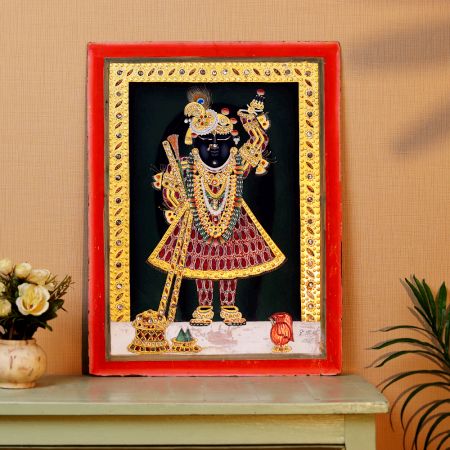CHARCOAL PAINTING
Charcoal drawinng is a rare and distinctive medium used to create detailed or more expressive sketches and drawings, mainly in grey and black tones.
This drawing medium is a great option to start when drawing from life since it allows for different levels of smudging and blends easily where it is possible to erase or correct it.
What is charcoal, and how is it made?
Charcoal is prepared from burning twigs or branches of trees and heated at high temperatures, and then you get a black stick that can be used to make a sketch or draw on paper or canvas. The charcoal painting was discovered in ancient times in caves or walls of houses.
However, many artists now appreciate and use it for their value as an artistic medium and for its ability to produce a difference between light and dark hues. Charcoal has lovely effects when used with other mediums, such as watercolors and toned paper.
Different Types of Charcoal Used to Make Drawings or Paintings
Solid or Compressed Charcoal
This is a charcoal stick made out of powdered charcoal, an essential tool for artists in sketching, shading, or drawing. The advantage of using charcoal is that since it has a very dark hue, it can be used for light to dark tones, adding a lovely character to the painting. It can also be sharpened to a desired level to make outlines or sketches. Applying a fixer to the drawing is advisable to prevent smudging or blackening.
Willow Charcoal
This is yet another medium of drawing but is less dark and can be erased with the help of an eraser. These willow charcoal pencils are used for beginners so they can erase the mistake or make necessary changes. The highlight of willow charcoal is that it is used for blending or making strokes or lines in case of caricature or painting.
Charcoal Pencils
Charcoal is a vital drawing material for all kinds of artists. Charcoal in pencil form is less messy and provides better control. Charcoal pencils are used to draw using line art(straight, horizontal, or vertical lines). They come in different hardness levels to provide different results and may be used for rapid sketching or adding fine details to works. They may be smeared and blended effortlessly, and highlights can be added using an Eraser. They also sharpen like ordinary graphite pencils.
White Charcoal
This is a rare Charcoal pencil for drawing on rough or tone paper; use it with black charcoal for highlighting and detailing an image.
Method and Tools Used for Charcoal Drawings
There are a few things required for charcoal painting. Firstly gather charcoal pencils, rough paper, or tone paper, available in different colors. You must also have erasers or stumps and glovers, which is essential as hands can get dirty during smudging or blending.
Five reasons why charcoal drawings are becoming popular
- For thousands of years, charcoal has been used for drawing and making paintings, with the earliest proof of its use found in cave drawings. Artists such as Leonardo da Vinci and Michelangelo used charcoal to make exquisite sketches and studies during the Renaissance period; Charcoal is still a popular medium in the art industry because of its ability to portray detailing and expression.
- Charcoal is a reasonably harmless organic substance for our health and the environment. The only drawback is that you must gently tap your finger on the back of your paper to eliminate any dust when drawing with them or use a soft brush or a towel to wipe it away.
- Charcoal is a relatively inexpensive 'basic' material. Compressed charcoal and charcoal pencils are very reasonably priced. Sharpen your supplies with an eraser and a knife, and you're ready to make some great designs. There's no need for fancy tools or expensive supplies.
- It's an excellent medium for learning how to work with hues because charcoal is also perfect for learning how to work with tonal values. It refers to how light or dark a thing is. The darker the item, the lower the weight. When an object is in a golden hue, it appears closer, whereas when it is dark, it seems far away.
- You can create several looks with charcoal using several techniques. You may make larger strokes with a lot of texture. Narrower pieces can also be used as a pencil for thinner lines.
- To retain their originality, charcoal paintings must be appropriately preserved. When your artwork is finished, use a fixing spray to protect it from fading and to maintain its original form.
In conclusion, charcoal painting is an exciting art method that allows artists to express themselves and create notable works of art. Its unique features, like an extensive tonal range and rich texture, make it a popular medium among painters. Experiencing charcoal painting provides a world of options for creativity and artistic growth. If you want to buy charcoal paintings, you can search online, in art galleries, or on our website Indianshelf. So, explore the world of charcoal painting, find your artistic voice, and let your imagination run wild with these traditional charcoal paintings.
How to Restore and Clean Charcoal Painting
Paintings are essential to home decor because they make rooms more aesthetically pleasing and elegant. They can act as focal points and impact the overall ambience of the space. Moreover, Paintings add to the character and detailing of the house through vibrant landscapes or thought-provoking abstracts.
Though with time, paintings may lose their features and vibrancy if not taken care of properly, by following specific guidelines, we can improve the longevity and aura of a portrait.
Charcoal Painting Maintenance and Cleaning
Follow the below steps to clean the paintings -
Avoid placing the painting in areas with much smoke or pollution because these substances can build up on the surface over time.
A soft, clean, and dry brush, such as a soft-bristle or clean makeup brush, should be gently and frequently used to dust the painting.
Handle paintings with clean hands to avoid transferring oils and dirt to the painting's surface, or wear sterile cotton gloves.
Keep the painting away from harsh sunlight, high humidity, and sudden temperature changes.
Use a sturdy frame that offers the painting the proper support and protection.
To prevent paint damage, keep the humidity level in the display area stable.
Never use household cleaning products, strong solvents, or abrasive materials on a painting because they can harm the paint and varnish layers.
Charcoal Painting Restoration
Start by thoroughly inspecting and evaluating damages such as cracks, discolouration, and flaking in painting. Next, use soft solvents and swabs to carefully remove accumulated dirt and grime. Use reversible methods to patch rips and holes, adding fresh paint if necessary.
Ensure the tools and methods you use are compatible with the painting.
Retouch faded areas by carefully blending and precisely matching colours. Apply a shielding varnish as a final step to protect the repaired layers.
To maintain the tone and authenticity of the artwork, you must have the expertise, persevere, and adhere to art standards.
More Paintings : Abstract Art Paintings|Canvas Paintings|Landscape Paintings|Miniature Paintings































.JPG?ver=1.7)
.JPG?ver=1.7)
.JPG?ver=1.7)
.JPG?ver=1.7)
.JPG?ver=1.7)
.JPG?ver=1.7)
.JPG?ver=1.7)

